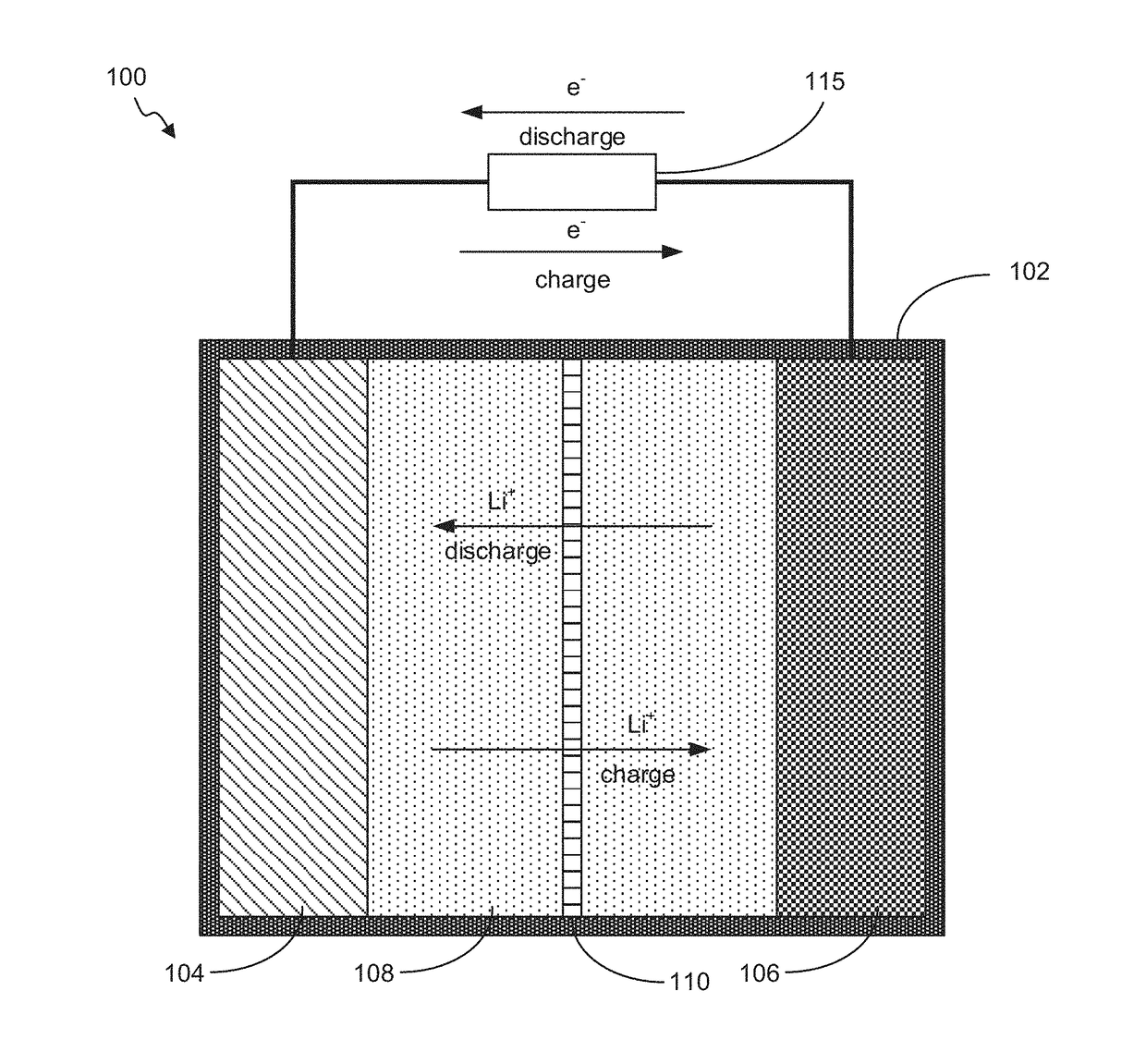Battery with Acidified Cathode and Lithium Anode
- Summary
- Abstract
- Description
- Claims
- Application Information
AI Technical Summary
Benefits of technology
Problems solved by technology
Method used
Image
Examples
example 1
AMO of Tin Oxide Functionalized by Acetate / Chloride
[0177]A tin oxide AMO was synthesized using a single-pot hydrothermal synthesis method. Briefly, tin acetate (Sn(CH3COO)2) was dissolved in an ethanol / water solution and acidified by addition of hydrochloric acid (HCl). The resultant AMO nanomaterial was a soft, grey material and was formed into an electrode. The electrode was assembled in a battery cell against lithium metal and cycled by discharging to zero volts, followed by charging to 1.5 volts. FIG. 16 depicts a plot of the measured capacity versus cycle number, as well as a plot of the voltage as a function of time during cycling.
example 2
AMO of Tin Oxide Functionalized by Acetate / Sulfate
[0178]A tin oxide AMO was synthesized using a single-pot hydrothermal synthesis method. Briefly, tin acetate (Sn(CH3COO)2) was dissolved in an ethanol / water solution and acidified by addition of sulfuric acid (H2SO4). The resultant AMO nanomaterial was a grey, flaky material and was formed into an electrode. The electrode was assembled in a battery cell against lithium metal and cycled by discharging to zero volts, followed by charging to 1.5 volts. FIG. 17 depicts an electron micrograph image of the AMO nanomaterial, a plot of the measured capacity versus cycle number, as well as a plot of the voltage as a function of time during cycling.
example 3
AMO of Tin Oxide Functionalized By Acetate / Nitrate
[0179]A tin oxide AMO was synthesized using a single-pot hydrothermal synthesis method. Briefly, tin acetate (Sn(CH3COO)2) was dissolved in an ethanol / water solution and acidified by addition of nitric acid (HNO3). The resultant AMO nanomaterial was a grey, flaky material and was formed into an electrode. The electrode was assembled in a battery cell against lithium metal and cycled by discharging to zero volts, followed by charging to 1.5 volts. FIG. 18 depicts an electron micrograph image of the AMO nanomaterial, a plot of the measured capacity versus cycle number, as well as a plot of the voltage as a function of time during cycling.
PUM
 Login to View More
Login to View More Abstract
Description
Claims
Application Information
 Login to View More
Login to View More - R&D
- Intellectual Property
- Life Sciences
- Materials
- Tech Scout
- Unparalleled Data Quality
- Higher Quality Content
- 60% Fewer Hallucinations
Browse by: Latest US Patents, China's latest patents, Technical Efficacy Thesaurus, Application Domain, Technology Topic, Popular Technical Reports.
© 2025 PatSnap. All rights reserved.Legal|Privacy policy|Modern Slavery Act Transparency Statement|Sitemap|About US| Contact US: help@patsnap.com



